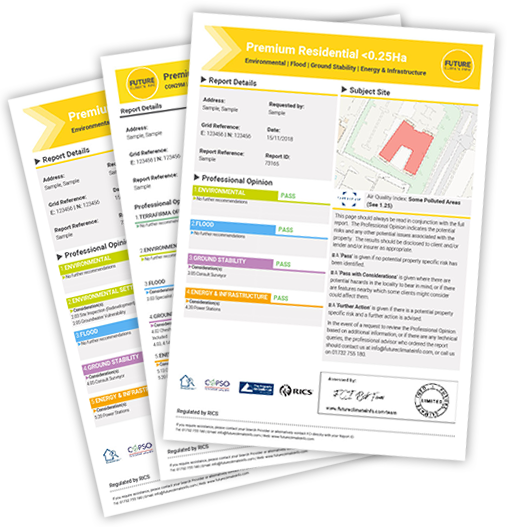
Expand wind and solar farms to reach 50% of energy needs, says Commission
The National Infrastructure Commission (NIC) was established on 2015 to advise Government on how to accommodate population and climate change challenges affecting the capacity of our existing infrastructure.
It has just published its first full report on how we need to scale resources to meet the needs and risks of the future. In this two part blog, we look first at the key recommendations on the UK’s energy and infrastructure.
The UK population is growing rapidly – from 66 million today to an estimated 77 million by 2030. Coupled with the expected uptake of electric vehicles, energy demand could increase by 9-26 per cent in this period. At the same time, up to 40 GW of older power stations will be retired and need to be replaced by alternatives.
The NIC are clear that new nuclear power stations are unlikely to be an additional source of electricity in the 2020s, with the possible exception of Hinckley Point C. They do not see that nuclear will meet the demand nor make an economic return, given the additional cost of waste management and storage.
They recommend completing Hinckley Point C and then look at every other nuclear power station on a case by case basis after 2025. Instead, we should focus on low cost renewable generation such as wind and solar and is the considered the “safest bet” for cheap power in the long term.
Currently, about 30% of the UK’s electricity comes from renewable sources like wind and solar power – up from 12% only five years ago.
The NIC’s overall aim is to deliver at least 50 per cent renewable generation by 2030. It is ambitious, but the current rate of progress is impressive. Indeed, earlier this year the whole of the UK went without coal for 3 days, relying on gas, nuclear and renewables – proving that it could be done.
Encourage onshore wind and solar farms
The report has been welcomed by green groups, arguing that the nuclear industry has struggled to deliver new projects to time and budget, and are now being undercut by a combination of renewables and smart grid technologies.
The renewables industry has responded to the report by calling on the Government to provide a clearer route to market for the lowest cost forms of renewables: onshore wind and solar farms.
The government has been reluctant to accelerate onshore wind and placed a policy cap on planning approvals 2 years ago. A report by Energy and Climate Change Intelligence Unit (ECIU) earlier this year claims the UK is missing out on onshore wind and could cost the country £1 billion over the next four or five years, The NIC report prioritises offshore wind in the first instance as operating costs and return on investment times have reduced drastically. However, the report also recommends reconsidering the benefits of onshore wind. It points to a “golden opportunity” to switch to a greener energy system should include a revival of support for onshore wind.
Onshore wind enjoys strong public support overall according to the latest study by the Department for Business, Energy and Industrial Strategy (BEIS)*. It recognises though that this has held back Scottish and Welsh onshore wind by UK planning restrictions largely defined by communities in England. It remains controversial though, and would still be subject to planning restrictions in England.
More roads, rail and charging stations
The NIC report also argued the government should prepare for a swift acceleration in electric vehicle uptake by working with Ofgem and local authorities to make sure charging infrastructure is in place to accommodate 100 per cent electric new car and van sales by 2030.
The National Infrastructure Assessment’s spending plans include funding for projects including Crossrail 2 in London, and Northern Powerhouse Rail linking the major northern cities, and recommends a boost in funding for major cities totalling £43 billion to 2040, with cities given stable five-year budgets, starting in 2021.
What is clear from the NIC report is that the UK cannot afford to stand still in its energy and infrastructure provision. New forms of development will transform our urban and rural landscapes, as we transition to a more renewable society.
This is sure to result in a rapid expansion of solar farm and onshore wind planning applications at the local level, with even larger offshore wind arrays along our coasts.
Keeping track with changes
With property purchase decisions now often made for 20-30 years hence, homebuyers must consider how the local area’s energy needs and changes to road and rail could affect their habitat. To accommodate population growth, cities will get more dense, towns and villages expand and road and rail networks added and adapted around us in an ever changing landscape.
Future Climate Info provides conveyancers and their clients with the latest insight on energy and infrastructure changes that may affect the vicinity of a property. As new schemes come online through planning, we will capture and alert these in a clear and concise way so you can make an informed decision on whether the investment could be harmed or improved.
Here is more information on the datasets in our environmental report
Call us on 01732 755 180 or email info@futureclimateinfo.com
Or enquire here
Try before you buy
To take advantage of a trial free order of your first environmental report, please complete the enquiry form and we will get back to you as soon as possible. We will need to take more details of the property or site and ask some more questions about your firm and the transaction.

